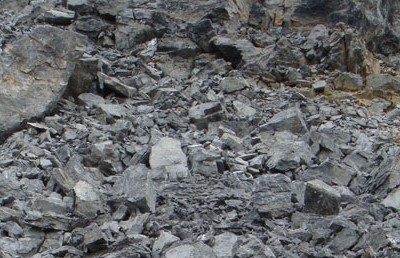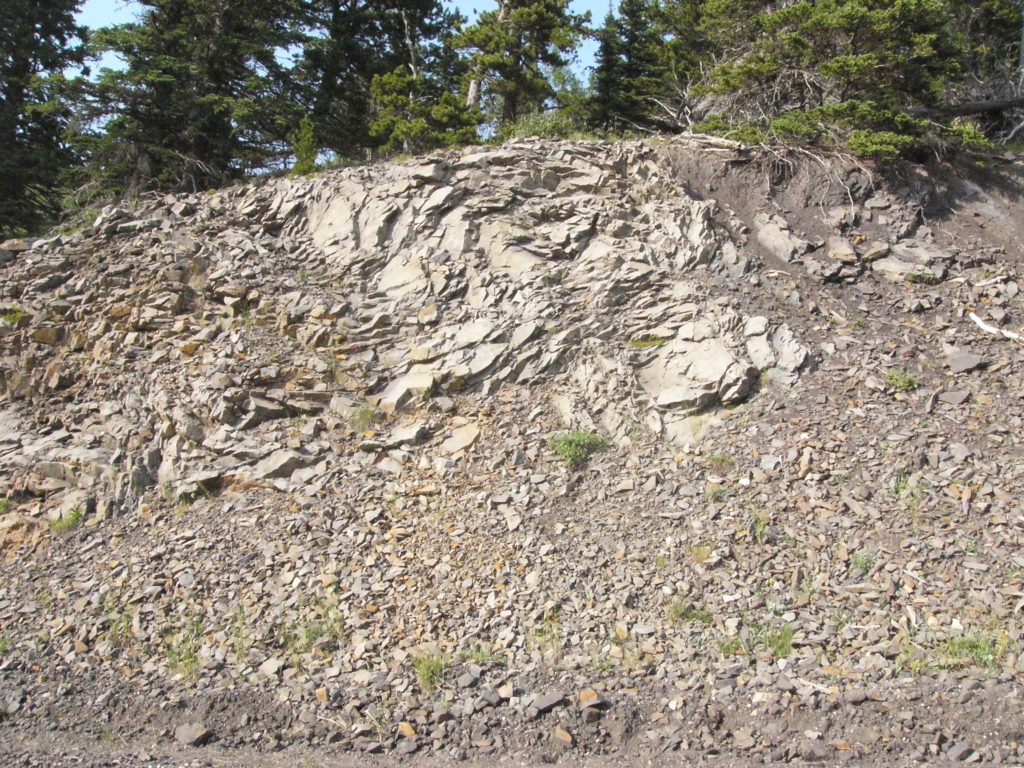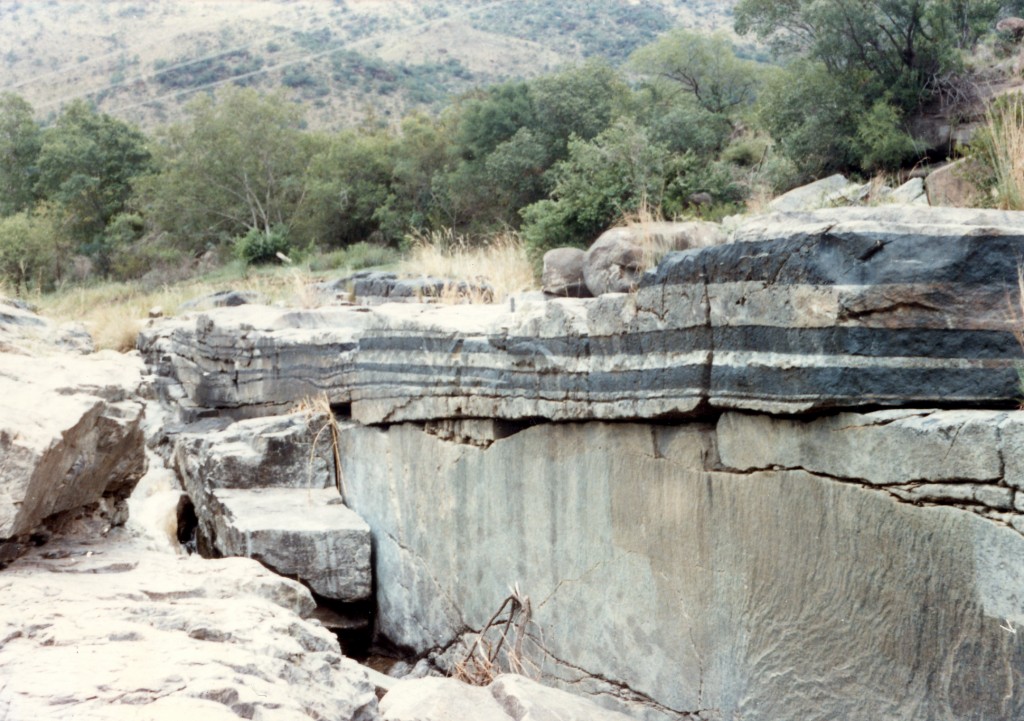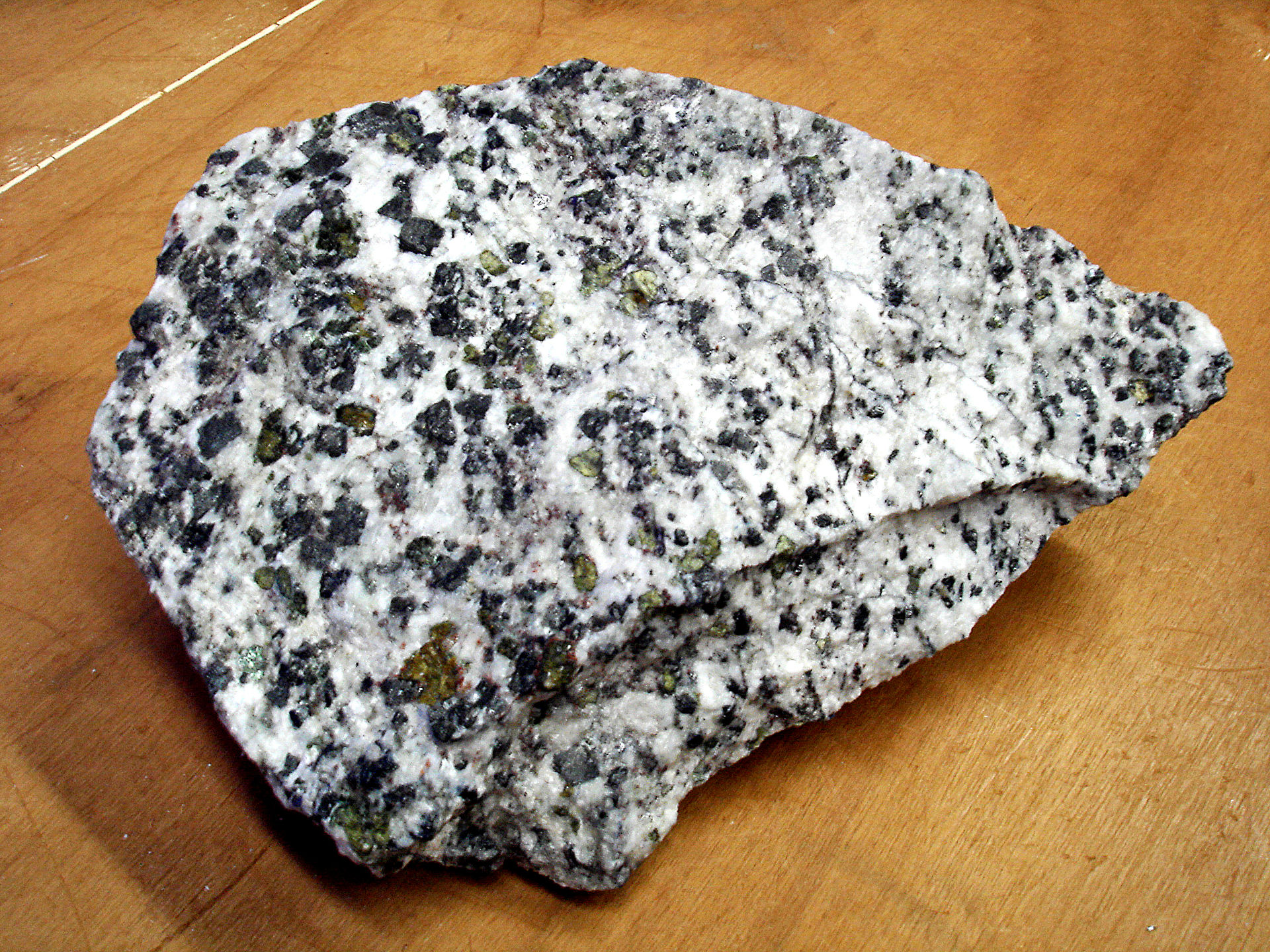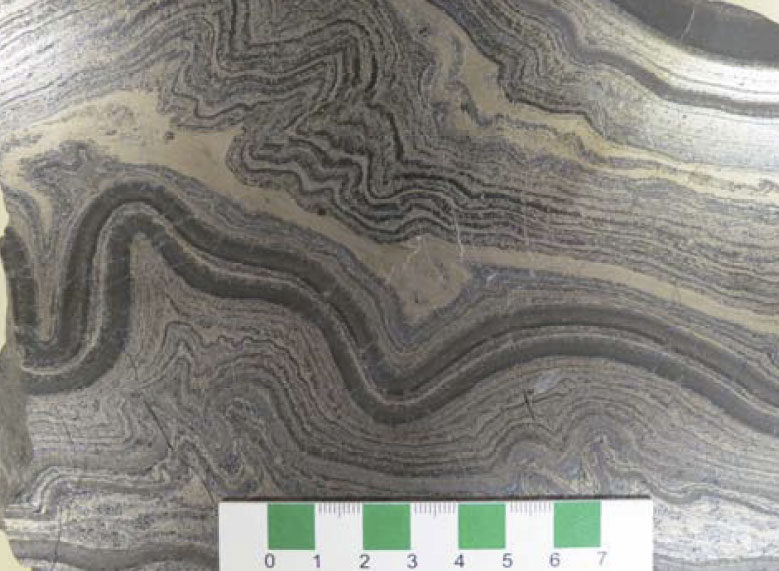There are three types of rocks: igneous, metamorphic, and sedimentary. This article is the second in our series on the fundamentals of rock types. If you missed the first article on igneous rocks, or want a refresher, read it here.
Introduction
Many ore deposit types are related to metamorphic rocks. Greenstone belts are home to massive gold deposits and komatiite-related nickel-copper-PGE deposits. Skarn deposits form as a result of contact metamorphism and uranium unconformity deposits overlay metamorphic basement rocks.
Metamorphic rocks form as the result of a solid-state transformation of preexisting rocks. Parent rock or protolith is the term for the preexisting rock that is metamorphosed. The main agents of metamorphism (which means “to change”) are heat, pressure, and chemically active fluids. Unlike igneous rocks, metamorphic rocks do not melt. Instead, they recrystallize and their structure becomes denser as they are subjected to heat and pressure.
What Causes Metamorphism?
Different combinations of heat and pressure cause different types of metamorphism. Sources of heat include the Earth’s internal heat, magmatic body intrusion, and the friction of tectonic plates during subduction or collision heat. Differences in pressure are caused by the weight of overlying rocks (confining pressure) or differential stress (directed pressure).The most common types of metamorphism are regional and contact metamorphism.
Contact metamorphism (fig.1d) is a type of high-temperature and low-pressure metamorphism that occurs due to igneous intrusion. Metamorphism is restricted to the contact aureole (the zone surrounding the intrusion). The country rock (preexisting rock that is intruded) is metamorphosed by the rapid and intense rise in temperature.
Regional metamorphism (fig.1a) occurs over large areas and is associated with collision environments. At subduction zones, a collision environment where an oceanic plate sinks beneath a continental plate, deformation occurs where the two plates collide. In continental collision environments, two continental plates collide, subjecting the rocks to intense horizontal stress.

Less common types of metamorphism are:
- Burial metamorphism which occurs when sediments deposited in a subsiding basin are buried and subjected to high pressure from the overlying sediments.
- Cataclastic metamorphism which occurs when rocks move along faults.
- Impact (shock) metamorphism which results from a meteor impact.
Metamorphic Textures
A rock’s texture is a description of:
- Size of mineral grains: fine, medium, or coarse.
- Shape of mineral grains: rounded, angular, or elongated.
- Arrangement of mineral grains: aligned or un-aligned (massive or homogeneous).
Metamorphic textures are divided into two categories: foliated and non-foliated.
Foliated textures consist of mineral grains aligned parallel to each other. Foliation results from compressional stress. Under the presence of direct pressure, platy or elongated mineral grains rotate, recrystallize, or change shape in a direction that best distributes the force of stress. Usually, mineral grain orientation is perpendicular to the direction of pressure. Some foliated rocks can be banded or have a striped appearance if light and dark minerals separate.
Foliated textures can be divided into 4 types, in order of increasing grain size:
Slaty: a very fine-grained texture composed of platy minerals which are impossible to see with naked eye. This type of foliated rock can easily be split into thin layers or sheets.
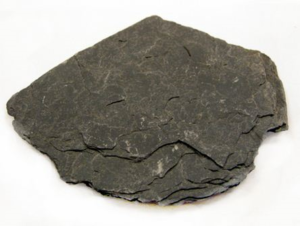
Phyllitic: grain size is slightly larger than slate and the rock exhibits a sheen – a shiny appearance caused by platy mica minerals.
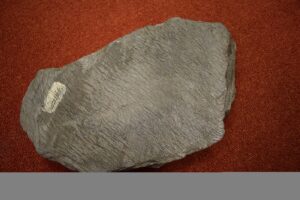
Schistose: composed of large mineral grains that are easily seen by the naked eye and are arranged in a planar or layered structure.
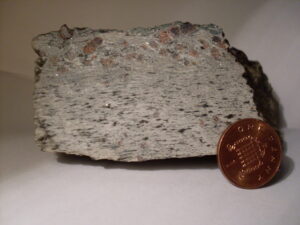
Gneissose: light and dark minerals separate and form a banded appearance. These rocks do not break as easily as slates, phyllites, or schists.
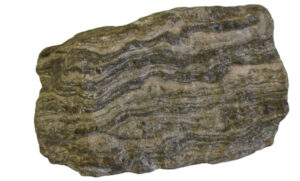
Non-foliated textures Unlike foliated rocks, non-foliated rocks are composed of more or less equidimensional minerals. They are commonly composed of quartz, calcite, or dolomite. Non-foliated textures are homogeneous and develop in rocks that have undergone very little deformation. In coarse-grained rocks, this texture is referred to as granoblastic, which means that the mineral grains can be seen with the naked eye. Common examples of granoblastic rocks are quartzite (composed mostly of quartz) and marble (composed of calcite or dolomite).

Index Minerals and Metamorphic Grade
Metamorphic processes produce new minerals. The most common are:
- Talc: Mg3Si4O10(OH)2
- Garnet: Mg3Al2(SiO4)3
- Chlorite: (Mg,Fe)3(Si,Al)4O10(OH)2(Mg,Fe)3(OH)6
- Biotite: K(Mg,Fe)3[AlSi3O10](OH)2
- Sericite: KAl2(AlSi3O10)(OH)2
- Staurolite: Fe2Al9Si4O23(OH)
- Kyanite: Al2SiO5
- Sillimanite: Al2SiO5
- Andalusite: Al2SiO5
Metamorphic grade describes the pressure and temperature involved in a particular metamorphic rock’s formation. Deformation increases as temperature and pressure increase, so different rocks will form under different temperature and pressure regimes. For example, the low-grade metamorphic rocks slate and phyllite form under relatively low pressure and low temperature conditions. High-grade metamorphic rocks like schist and gneiss form in high temperature and high pressure conditions, often at greater depths under the surface of the Earth.
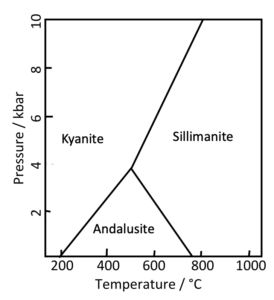
The metamorphic grade scale is based on a special set of minerals known as index minerals. During metamorphic transformation, low-grade index minerals evolve into a new set of higher grade minerals. Each mineral crystallizes under specific pressure and temperature conditions. The stability range for minerals is quite small, which gives geologists the opportunity to use minerals as indicators of the specific pressure and temperature conditions under which a rock was formed. Minerals that can be used as good indicators are called index minerals.
An example of index minerals is sillimanite, kyanite, and andalusite. The three minerals have the same chemical composition (Al2SiO5) but different crystal structures. The temperature and pressure conditions determine which mineral will form.
The concept of metamorphic facies is based on metamorphic grade. Metamorphic facies are groups of metamorphic rocks that form under the same pressure and temperature conditions, but from different parent rocks.
Metamorphic Environment and Tectonic Setting
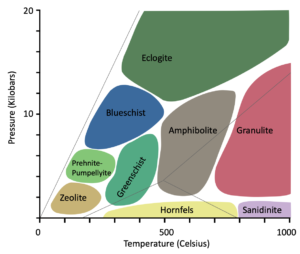
In metamorphic rocks, larger mineral grain size indicates a higher grade of metamorphism. This is valuable to find out the conditions under which a rock was formed and to understand the geological history of the area. Metamorphic facies also provide information about the environment of metamorphic rock formation. Greenschist and amphibolite facies are typical of continent-continent collision environments and regional metamorphism. Hornfels facies represent contact metamorphism and indicate an active geological history with magma intrusion. Blueschist facies are indicative of subduction environments, which are characterized by low-temperature, high-pressure metamorphism.
Common Metamorphic Rocks
Slates are very fine-grained rocks that form under low-grade metamorphic conditions. They are composed of platy mica minerals and have a tendency to break into flat slabs. Shale or claystone is the parent rock of slate.
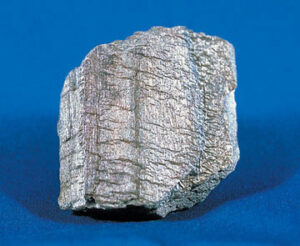
Phyllites are fine-grained rocks formed under low to medium metamorphic conditions. The parent rock is slate. Phyllites are very subject to mechanical disintegration and have a glossy sheen that distinguishes them from slate.
Schists are medium to coarse-grained rocks with a foliated texture. The parent rock is shale and they are mainly composed of platy minerals (micas). They can also contain small amounts of accessory minerals (garnet, staurolite). They are often named for the dominant mineral: mica schist, chlorite schist, talc schist, etc.
Gneisses are foliated, highly metamorphosed medium to coarse-grained rocks. They are composed mainly of quartz, feldspar, and mica, similar to their parent rock, granite. Gneisses commonly have a banded texture, where the light and dark minerals are aligned.
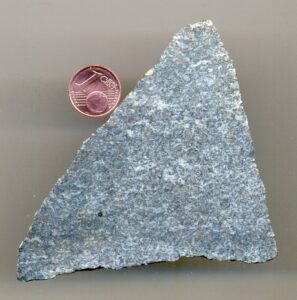
Amphibolites are foliated, highly crystalline rocks composed mainly of amphibole and plagioclase. The parent rock is typically basalt.
Marbles are non-foliated rocks formed by the metamorphism of limestones and dolomites. They are composed of calcite or dolomite.
Quartzites are non-foliated rocks composed of more than 80% quartz. These rocks are the result of quartz sand and sandstone metamorphism.
Identifying Metamorphic Rocks
As we have discussed, metamorphic rocks are formed from alteration of an existing rock under pressure and temperature. Visual appearance, texture, and mineral composition are key to understanding and identifying rock type.
Before determining rock type, it’s important to remember not to examine weathered rocks. Dig deeper! Do not pick up a rock from the surface of the ground, as it could have been changed by weathering agents, plant and animal activity, or could have come from a different place altogether. When you find the perfect “fresh” sample from an outcrop, use this series of questions to help decide whether or not the rock is metamorphic.
- Is the sample easily broken? Igneous rocks are extremely solid. Some metamorphic rocks (slate, phyllite) can be broken into flat, sheety planes. Image A.
- Does the rock look “shiny”? A rock that contains a large amount of tiny mica grains (muscovite or biotite) could be metamorphic. Be careful! Large mica crystals are signs of igneous pegmatite rocks.Image B.
- Does it show any layering or banding? If so, it is probably a foliated metamorphic rock. Keep in mind that layering can be observed in layered igneous rocks. But in this case, the mineral composition will be mostly represented by sulfides (which are not common for metamorphic rocks). Also, do not confuse layering in outcrops with layering in your sample. Layering in outcrops is common for sedimentary rocks. Image C.
- Look at the rock’s minerals. If you see index minerals typical of metamorphic rocks – kyanite, chlorite, talc, garnet – it’s probably a metamorphic rock. Images D and E.
- Can you observe any fossils? Fossils are a sign of sedimentary rocks, and are very rare in metamorphic rocks.
- Does it react with hydrochloric acid (HCl)? Calcite causes an immediate reaction with acid. If the rock contains no visible fossils and has a crystalline, fine-grained, non-foliated texture, it’s most likely a marble. Image F.
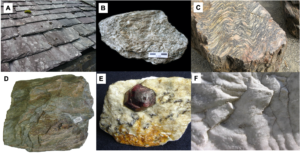
Once you have decided that the rock is metamorphic, you can determine the rock’s name by starting with its texture. Is it foliated or non-foliated? What is the grain size? What are the most abundant minerals in the rock? For example, a shiny, medium-grained foliated rock with large garnet crystals is likely a garnet-mica schist. A dark, very fine-grained rock that breaks into sheets is most likely slate.
Conclusions
Understanding metamorphic rocks and the processes that create them will give you a better understanding of how common ore deposits form. Hydrothermal alteration–a very common ore-forming process–is essentially low-grade metamorphism. Metamorphic and igneous rocks often form in similar tectonic settings–the more you know about both types of rock, the better you’ll understand the geologic history and setting of orebodies. In learning how to identify metamorphic rocks, you’ll become more familiar with different types of minerals. This is a handy skill to have when evaluating companies’ technical reports, drill test reports, and making overall investment decisions.
References and Further Reading:
- K. Haldar, Josip Tišljar, in Introduction to Mineralogy and Petrology, 2014
- H. Schön, in Handbook of Petroleum Exploration and Production, 2011
- An introduction to geology. Chapter 6: Metamorphic rocks.
- Physical Geology. Chapter 10.5 Metamorphic Facies and Index Minerals
Subscribe for Email Updates

